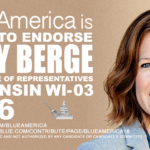Did you know that during the Greater Depression, communists and socialists organized people all over the country to stop foreclosures and evictions? Why aren't more of us doing it now?
After the Battle of the Bronx, as it was later called, the landlords at Bronx Park East asked a blue ribbon committee of Bronx Jewish leaders to arbitrate the dispute. But the strike leaders rejected arbitration. "When times were good," strike leader Max Kaimowitz declared "the landlords didn't offer to share their profits with us. The landlords made enough money off us when we had it. Now that we haven't got it, the landlords must be satisfied with less."
The landlords retaliated by forming rent strike committees. They used their resources to push through quick evictions. Many of the renter strikes were broken. Mass evictions took place at 665 Allerton Avenue and 1890 Unionport Road.
The landlords continued their offensive and the judges rarely considered the neediness of the families. By December 1932 is appeared that the Bronx rent strikes had largely been crushed.
But then something happened.
in December of 1932 and January of 1933, the Unemployed Councils began a new wave of strikes that rapidly assumed far greater proportions than the last one. Beginning in Crotona Park East, the strikes spread into Brownsville, Williamsburg, Boro Park, the Lower East Side, and much of the East Bronx. In February of 1933, a panicked Real Estate News writer warned that "there are more than 200 buildings in the Borough of the Bronx in which rent strikes are in progress, and a considerably greater number in which such disturbances are brewing or in contemplation."
Yes, when you push people to the edge, sooner or later, they're going to fight back:
In these excerpts from a recorded interview, Anna Taffler, a Communist activist and a Russian Jewish immigrant, described how her own experience of facing eviction pushed her into organizing the unemployed.
Mary Gale helped organize the poorest people in Long Island City.
Meanwhile, a rival Seattle group, Unemployed Citizens’ League, formed by socialists Hulet Wells and Carl Branin, provided practical aid like food and wood for heating to the unemployed.
In Pittsburgh:
The unemployed organizations shared common demands: They called for sufficient government relief to provide an unemployed family with a survival budget and for the creation of public employment on a large scale. They also organized to combat the evictions and foreclosures of thousands of unemployed renters and homeowners.
On March 6, 1930. International Unemployment Day, 5,000 unemployed gathered at the Pennsylvania Railroad Station. Their march toward downtown was broken up after half a block by dozens of club-wielding police.
Despite this initial setback, protests grew as the Depression deepened. By October,. 1930, the Pittsburgh City Council agreed to appropriate $100,000 for emergency relief, but these funds ran out on January 15, 1931. On that day another demonstration of thousands took place, this time in front of the City Council Building. The rally was sponsored by the Unemployed Councils and their allies. Seven of their members told City Council their demands for free coal and children's winter clothing, as well as public service jobs.
Protests mounted in 1931 and 1932. The councils organized several marches to Washington and Harrisburg. Unlike the famous march led by Pittsburgh's Father James Cox, which was cautiously welcomed by government officials fearful of antagonizing both the religious community and the jobless, many of these marches were met with fierce repression. Marchers returning from Washington after one demonstration were denied entrance to the city by police and forced to camp out on Neville Island.
The protests of the unemployed reached a peak in 1933 and 1934. In March, 1933, 40 members of the Wilkinsburg Unemployed Council seized a Duquesne Light truck, which was about to shut off the power to their apartment building. Hundreds of Rankin Unemployed Council members jammed the home of an unemployed man and his invalid daughter to stop a planned sheriff's sale of his furniture. The crowd halted any bidding on the goods by the speculators. When a policeman tried to clear the way for the bidders, the crowd took his gun and blackjack, bought all the furniture for a total of 24¢, and returned it to its owner.
Because of actions like these across the nation, President Roosevelt and Congress were forced to act. The WPA, PWA, and CCC provided millions of temporary jobs. In 1935 the Social Security Act established old age pensions, unemployment compensation and public welfare. It was clear that the organized unemployed had played a major part in winning these gains. Many took this lesson with them into the struggle to build unions in steel and auto.



















